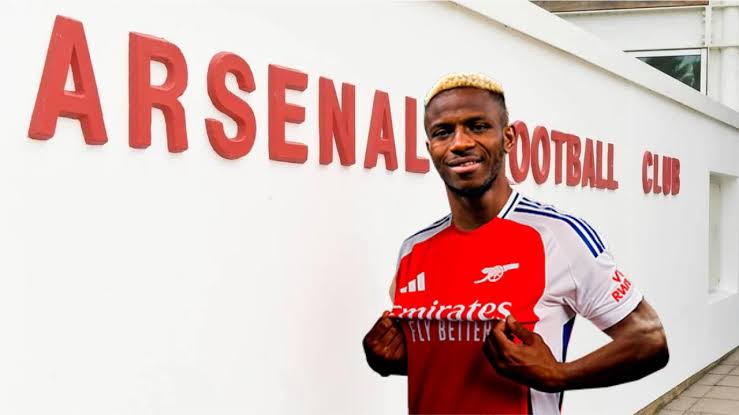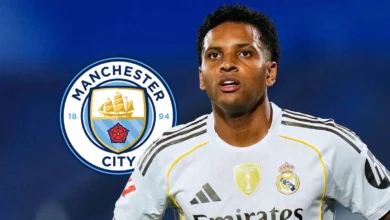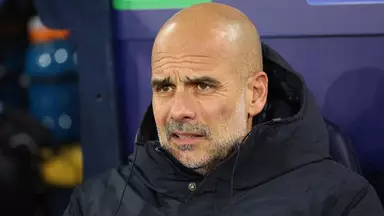Victor Osimhen Transfer Saga: Arsenal’s £64m Pursuit Hits Major Roadblock

The summer transfer window of 2025 has been filled with anticipation, speculation, and dramatic twists, but few stories have captured the attention of football fans quite like the ongoing saga surrounding Victor Osimhen’s future. The Nigerian striker, who has become one of Europe’s most coveted forwards, finds himself at the center of a transfer battle that could reshape the attacking ambitions of several Premier League giants.
Arsenal’s interest in Victor Osimhen is not a recent development. The Gunners have been monitoring the prolific striker for considerable time, recognizing his potential to transform their attacking dynamics. Mikel Arteta’s side has been in pursuit of a world-class striker who can provide the clinical edge needed to compete at the highest level, particularly in their quest to challenge for the Premier League title and make a significant impact in European competitions.
The 26-year-old Nigerian international has established himself as one of the most lethal forwards in European football. His journey from relative obscurity to becoming a household name has been remarkable, characterized by consistent goal-scoring performances and an ability to deliver in crucial moments. His physical presence, pace, and clinical finishing have made him an attractive proposition for clubs seeking to bolster their attacking options.
Arsenal’s pursuit of Osimhen represents part of a broader strategic approach to squad building. The North London club has been methodically addressing various areas of their team, and securing a top-quality striker has been identified as a priority. The club’s recruitment team, led by Edu Gaspar and working closely with Arteta, has been exploring multiple options, with Osimhen emerging as a primary target due to his proven track record and suitability for the Premier League’s physical demands
Osimhen’s most recent chapter unfolded in Turkey, where he spent the previous season on loan at Galatasaray. This move, which initially surprised many observers, proved to be a masterstroke for both player and club. The Turkish giants provided Osimhen with the platform to showcase his abilities on a different stage, and the striker responded with exceptional performances that reminded the football world of his quality.
During his time in Istanbul, Osimhen demonstrated remarkable consistency and adaptability. His 37 goals across all competitions for Galatasaray represented more than just impressive statistics; they showcased his ability to perform in different footballing environments and under varying tactical systems. The Turkish Super Lig, while perhaps not as competitive as Europe’s top five leagues, still provided Osimhen with valuable playing time and the opportunity to maintain his sharpness during a crucial period of his career.
The loan spell at Galatasaray also served as a reminder of Osimhen’s versatility. He proved capable of leading the line as a sole striker, linking up play effectively with his teammates, and providing the kind of physicality and aerial threat that makes him such a valuable asset. His performances in European competitions during this period further enhanced his reputation, demonstrating that he could perform on the biggest stages when required.
For Arsenal, the pursuit of Osimhen represents more than just acquiring a talented striker; it’s about addressing a fundamental tactical need. Arteta’s system has often relied on false nines or versatile forwards who can drop deep and contribute to build-up play. While this approach has yielded positive results, the addition of a natural goalscorer like Osimhen could provide the missing piece in Arsenal’s tactical puzzle.
The Gunners have experimented with various attacking configurations, utilizing players like Gabriel Jesus, Eddie Nketiah, and Kai Havertz in central roles. While each has contributed in their own way, none has provided the consistent goal threat that a striker of Osimhen’s caliber could offer. The Nigerian’s ability to occupy defenders, create space for teammates, and convert chances with clinical precision could elevate Arsenal’s attacking play to new heights.
From a financial perspective, the reported £64 million valuation represents a significant investment for Arsenal. However, when considered within the context of the modern transfer market and the potential impact such a signing could have on the club’s ambitions, the fee appears reasonable. Arsenal’s improved financial position, bolstered by their return to Champions League football and increased commercial revenues, provides them with the resources to compete for elite talents.
Chelsea’s interest in Osimhen adds another layer of complexity to the transfer saga. The Blues, under the guidance of Enzo Maresca, have been actively reshaping their squad following a period of significant change. The club’s new ownership has demonstrated a willingness to invest heavily in talent, and their pursuit of Osimhen aligns with their strategy of acquiring proven performers who can make an immediate impact.
Chelsea’s need for a striker has been evident, despite their recent acquisitions of Liam Delap and Joao Pedro. The club has been seeking a focal point for their attack, someone who can provide the kind of presence and goal threat that has been missing from their squad. Osimhen’s profile fits perfectly with Chelsea’s requirements, offering the combination of physicality, pace, and clinical finishing that could transform their attacking play.
The London rivalry between Arsenal and Chelsea adds an extra dimension to their competition for Osimhen’s signature. Both clubs understand the symbolic importance of winning this particular transfer battle, as it could signal their respective ambitions and ability to attract top-tier talent. The prospect of Osimhen choosing one London club over another would represent a significant statement about the direction each club is heading.
The reported development that Osimhen has expressed his willingness to join Manchester United over both Arsenal and Chelsea represents a significant blow to the London clubs’ aspirations. According to Spanish outlet Fichajes, the striker has made his preference known, potentially leaving Arsenal and Chelsea to explore alternative options.
Manchester United’s appeal to Osimhen likely stems from several factors. The club’s historic reputation, global reach, and ambitious project under the ownership of Sir Jim Ratcliffe may have influenced the striker’s decision. Additionally, United’s need for a striker is perhaps more pressing than that of their London rivals, potentially offering Osimhen guaranteed first-team opportunities and a central role in their attacking plans.
The absence of European football at Old Trafford, while initially seen as a disadvantage, may not have deterred Osimhen significantly. The striker might view this as an opportunity to help United return to continental competition while establishing himself as a key figure in their resurgence. The club’s ability to offer competitive wages and their commitment to building a squad capable of challenging for major honors could have swayed his decision
The £64 million valuation placed on Osimhen by Napoli reflects the current state of the transfer market and the premium placed on proven strikers. This figure, while substantial, actually represents relatively good value when compared to some recent transfer fees for forwards of similar caliber. The market has seen prices for elite strikers reach astronomical levels, making Osimhen’s valuation appear reasonable by contemporary standards.
For Napoli, the decision to part ways with Osimhen aligns with their strategic planning. The Italian club’s preference for Romelu Lukaku, whose goals contributed to their Serie A title triumph, suggests a tactical shift that may not accommodate Osimhen’s playing style. The financial windfall from his sale would provide Napoli with resources to strengthen other areas of their squad and potentially fund additional acquisitions.
The comparison with Viktor Gyokeres, whose valuation reportedly exceeds £80 million, highlights the relative value that Osimhen represents. While Gyokeres has impressed at Sporting CP, Osimhen’s proven track record across multiple leagues and competitions makes him a more established commodity. This price differential could make Osimhen a more attractive option for clubs operating within financial constraints.
With Osimhen potentially heading to Manchester United, Arsenal must evaluate their alternatives. The club has been linked with several other strikers, including Benjamin Sesko and Viktor Gyokeres, each offering different attributes and challenges. Sesko, the young Slovenian striker, represents a long-term investment with significant potential but less proven experience at the highest level.
Gyokeres, on the other hand, offers a more established option but at a higher price point. His performances in the Portuguese league and European competitions have attracted attention from multiple clubs, potentially creating a competitive bidding situation. Arsenal’s decision-making process will need to weigh the immediate impact versus long-term potential of each target.
The club’s recruitment strategy has typically favored players who can grow within their system and contribute to their long-term vision. This approach may favor younger talents like Sesko, who could develop under Arteta’s guidance and potentially become cornerstones of the team for years to come. However, the immediate need for goals and the pressure to compete at the highest level might push Arsenal toward more established options.
Arsenal’s pursuit of Osimhen must be viewed within the broader context of their transfer strategy and squad development. The club has been building a young, talented squad capable of sustained success, and any striker acquisition must align with this vision. The addition of a proven goalscorer like Osimhen could accelerate their progress, but it must be balanced against their commitment to developing young talent.
The club’s recent transfer activity has demonstrated a clear philosophy: identify talented players who can contribute immediately while possessing the potential for further development. This approach has yielded positive results, with several acquisitions becoming integral parts of Arteta’s squad. The striker position represents perhaps the most crucial piece of this puzzle, requiring careful consideration of both immediate needs and long-term planning.
Arsenal’s financial flexibility allows them to pursue multiple targets simultaneously, providing insurance against disappointment in any single pursuit. This strategy reduces the risk associated with placing all their hopes on one player while maintaining the ability to secure their primary targets when opportunities arise.
The addition of a striker like Osimhen would inevitably impact Arsenal’s existing squad dynamics. Current forwards would need to adapt to new roles or face increased competition for places. This competitive environment could drive improvements across the squad, potentially elevating the performance levels of all attacking players.
Gabriel Jesus, who has operated as Arsenal’s primary striker in recent seasons, might find himself competing for the central role or adapting to different positions within the forward line. His versatility and work rate make him a valuable asset regardless of new arrivals, but his role would certainly evolve with the addition of a natural goalscorer.
The development of younger players like Folarin Balogun and Eddie Nketiah could also be affected by such a high-profile signing. While competition for places can drive improvement, it’s essential that promising talents continue to receive opportunities to develop and contribute to the team’s success.
Osimhen’s international career with Nigeria adds another dimension to his appeal. The striker has been a consistent performer for his country, contributing to their successes in various competitions. His international experience and leadership qualities could prove valuable for Arsenal, particularly in European competitions where such experience is crucial.
The Nigerian’s familiarity with playing in high-pressure situations and his ability to perform on the international stage demonstrate his mental strength and adaptability. These qualities are particularly valuable for a club like Arsenal, which aims to compete at the highest level both domestically and internationally.
His presence could also help Arsenal’s global appeal, particularly in African markets where Nigerian players command significant followings. This commercial aspect, while secondary to sporting considerations, represents an additional benefit of signing a player of Osimhen’s profile.
As the transfer window progresses, Arsenal faces crucial decisions about their striker pursuit. The apparent preference of Osimhen for Manchester United forces the Gunners to evaluate their alternatives and potentially adjust their strategy. The club’s ability to adapt quickly and secure alternative targets will be crucial to their summer transfer success.
The broader implications of this transfer saga extend beyond individual signings. It reflects the competitive nature of the modern transfer market and the challenges faced by clubs in securing their primary targets. Arsenal’s response to this setback will demonstrate their resilience and strategic flexibility in navigating complex transfer situations.
Ultimately, the pursuit of Victor Osimhen represents Arsenal’s ambition to compete at the highest level and their commitment to providing Mikel Arteta with the resources needed to achieve success. While the outcome of this particular chase remains uncertain, the club’s proactive approach to addressing their striking needs demonstrates their determination to build a squad capable of sustained excellence.
The coming weeks will reveal whether Arsenal can secure their preferred striking target or whether they must adapt their plans to accommodate market realities. Regardless of the outcome, this transfer saga highlights the complex dynamics of modern football recruitment and the challenges faced by ambitious clubs in their pursuit of elite talent.














